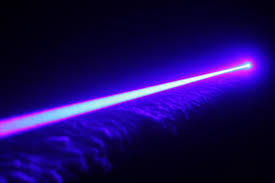Shedding Light on Lightsabers

Although technology has advanced rapidly since 1977 and the release of the first “Star Wars” movie, lightsabers are still a sci-fi dream.
December 14, 2019
Since their debut in 1960, lasers have become an object of increasing interest in the public eye. From the classic movie “Star Wars” portrayal of laser weaponry, to medical lasers that can remove tattoos, lasers are everywhere. This invention has worked its way into our everyday lives, but since “Star Wars” created the lightsaber decades ago, the public has always dreamed of being able to have epic duels with beams of light.
According to the Lawrence Livermore National Laboratory, lasers are formed when the electrons inside atoms in crystals, glasses, and gases, absorb energy through an electric current. Lasers have a variety of uses; mouse sensors and cutting tools are two of the most common places we see lasers, while a multitude of scientific instruments utilize them. Lasers are difficult to create, as they require extremely precise construction at a high cost. A laser’s size and power can drastically affect their ease of use as well. A mouse’s tech is less advanced than a high-power laser, but they are still based on the same technology, and are a lot easier to use.
Examples of some extremely powerful lasers are NASA’s GRACE and GRACE-FO satellites, which observe miniscule changes in the Earth’s geography. These satellites use lasers to sense the distance between the satellites while in space. Lasers on the International Space Station, the expensive man-made object ever according to Investopedia, contribute heavily to the total cost. The Laser Interferometer Gravitational-Wave Observatory, a laser on the International Space Station, is extremely expensive, a whopping $365 million, CNBC states. In contrast, the lasers on the bottom of the mouse can only be around a few dollars. A lightsaber would come in somewhere on the lower end, but most people wouldn’t be able to afford one, even if they went into mass production.
In recent years, laser technology has advanced to the point where the theoretical “Star Wars” lightsabers may not be too far away. According to The Independent, the reason we have not developed the classic “Star Wars” lightsaber is because of the logistics of creating such a tool. You would need a large and concentrated amount of plasma, with enough energy to cut through hardened metals like steel. Unfortunately, even if you could get the tremendous amount of energy that is required to make a lightsaber, combat with them would be rendered moot, as the “blades” would not end. According to Space.com, just like laser pointers, without stopping the beam of light, the laser would shine onto the nearest flat surface.
So yes, if we had the money and scientists to successfully create a lightsaber, we could. However, they wouldn’t be used for combat as displayed in the movies, as they could pose a massive safety hazard. As we continue to progress in technology, lasers will also continue to advance, and hopes for a sci-fi sword will linger.








